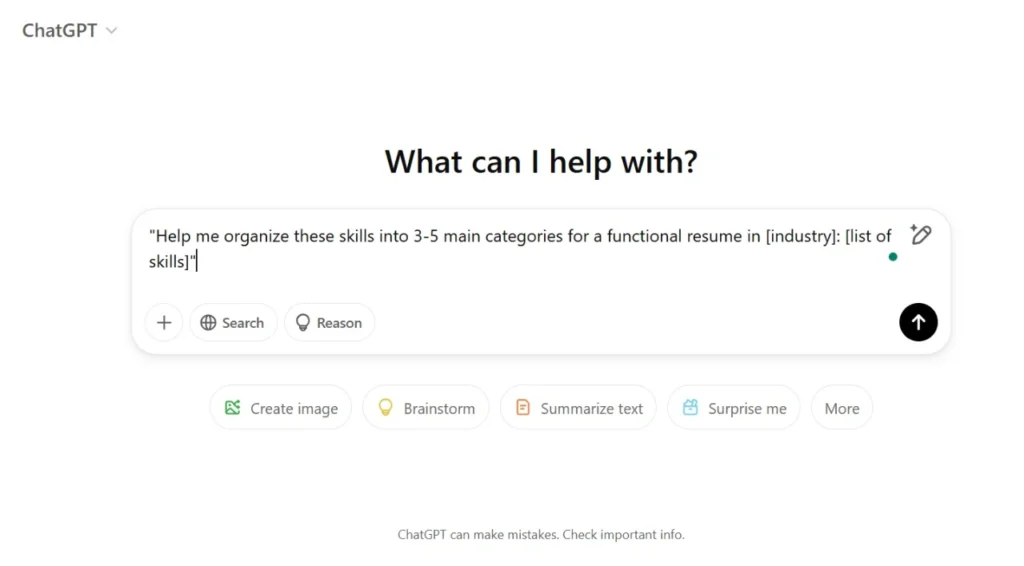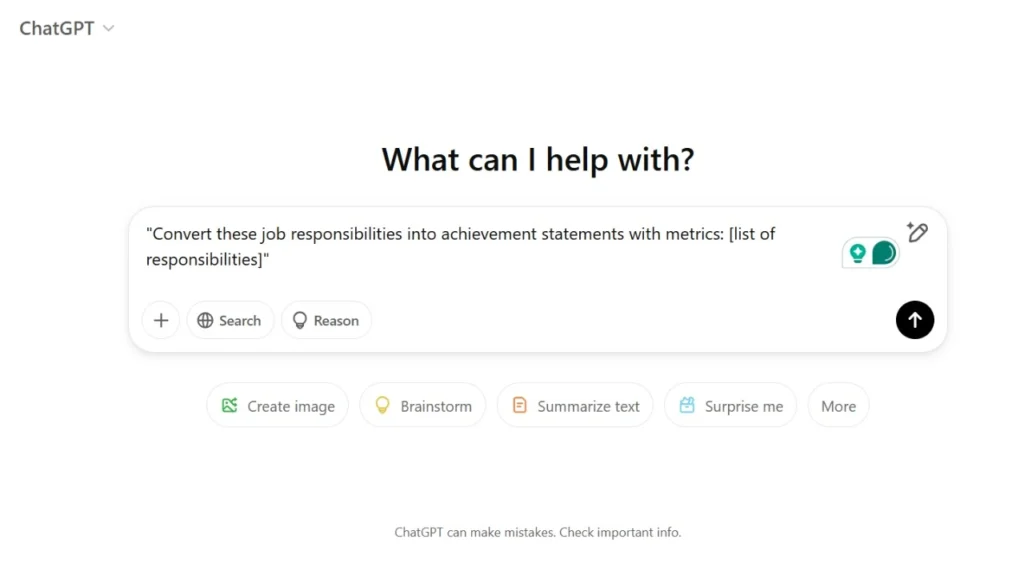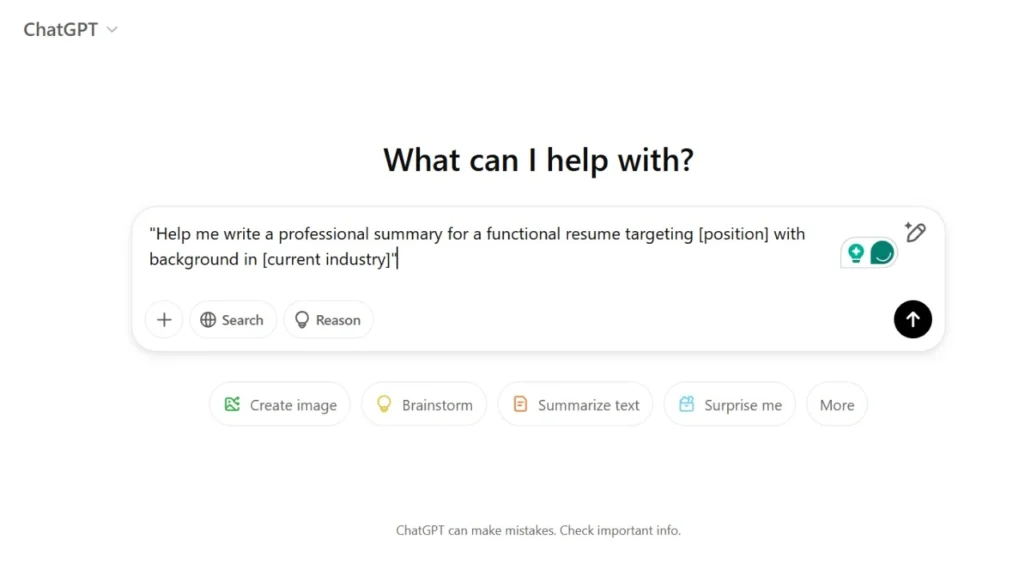The job market is changing and we can’t rely on traditional resume making tactics to land a job. Let’s make the change. Whether you’re navigating a career transition, managing employment gaps, or possessing a diverse skill set that doesn’t fit neatly into a chronological timeline, a functional resume format might be your way to standing out and for that functional resume template will help you.
It’s a skilled, focused approach, and 63% of recruiters now prioritize skills over work history when selecting candidates.
In this article, you’ll learn about functional resumes, from understanding their unique value to creating one that captures attention and opens doors.
What is a Functional Resume?
A functional resume which is also known as a skills-based resume, focuses on your skills and capabilities rather than your chronological work history. This format organizes your experience into skill categories, making it particularly effective for professionals with diverse experience or those looking to highlight transferable skills.
Unlike traditional chronological resumes, which list jobs in reverse chronological order, functional resumes focus on competencies and achievements. This approach allows you to present your professional story through the lens of your capabilities rather than the timeline.
How is a Functional Resume Different?
Functional vs. Chronological Resume
1. Organization Structure
● Functional: Group experience by skills/competencies
● Chronological: Lists experience by date in reverse order
2. Focus Point
● Functional: Emphasizes capabilities and transferable skills
● Chronological: Highlights career progression and growth
3. Work History
● Functional: Brief work history section at the bottom
● Chronological: Detailed work history as the main content
4. Best For
● Functional: Career changers, gap coverage, skill highlighting
● Chronological: Traditional career paths, consistent progression
Functional Resume Template
Core Components
The main components of a functional resume template include these portions.
1. Header Section
This section comes with a full name, professional title, contact information, and professional media links. That’s it, you do not have to complicate things
2. Professional Summary
It includes 3-4 sentences highlighting key strengths, Career objectives, and Value proposition. Your professional summary doesn’t have to be lengthy at all
3. Skills Categories
Your skills categories include these points.
- Leadership & Management
- Technical Expertise
- Project Management
- Communication
- Industry-Specific Skills
4. Achievements Section
You do not have to brag in your achievement section. Add quantifiable results, notable projects, and recognition and awards.
5. Work History
Add your company name, title held, Employment dates, and location. This information gives better insights into your history.
6. Education & Certifications
Add,
- Degrees
- Professional certifications
- Relevant training
How to Write a Functional Resume
Step-by-Step Guide
1. Skills Assessment
In the skills assessment part, you have to list all professional skills, group similar skills, and identify the most relevant skills for the target role. Keep it concise and to the point.
2. Achievement Compilation
Compile your achievement in a way that looks good. Gather quantifiable results, Document major projects, Note recognition, and awards
3. Skills Categories Creation
Write your resume according to your job and skills. Choose 3-5 main skill categories, Align with job requirements, and Prioritize the most relevant skills. Talk about how much work you have done and why you are worthy of it.
4. Achievement Distribution
You can implement the following things while distributing achievements in your resume.
- Assign achievements to skill categories
- Use strong action verbs
- Include metrics where possible
5. Work History Summary
- List positions concisely
- Include essential details only
- Maintain reverse chronological order
Functional Resume Examples
Example 1: Career Changer



Example 2: Skills Highlighter
These details will be similar to the above mentioned example but the focus will be more on skills.
Benefits of Functional Resume Format
Why functional resume format? Well, these benefits will explain the cause.
1. Skill Emphasis
This format highlights transferrable skills, shows experience in depth along demonstrates versatility.
2. Gap Management
As you’ll not be focusing on years and dates in your resume, it’ll minimize focus on employment/ career gaps in your resume and Emphasize capabilities over the timeline.
3. Career Transition
It showcases relevant skills for new roles, focuses on transferable expertise, and supports industry changes.
Things to Take Care Of
1. ATS Optimization
– Use industry-standard skill keywords
– Maintain clean formatting
– Include company names and dates
2. Balance
– Don’t completely ignore chronology
– Include specific achievements
– Maintain a professional tone
3. Customization
– Align skills with job requirements
– Use relevant industry terminology
– Adjust examples for the target role
ChatGPT Prompts for Functional Resume Creation
1. Skills Organization

2. Achievement writing

3. Section Development

FAQs
Q. When should I use a functional resume format?
Functional resume templates are ideal for:
- Career changers
- Professionals with employment gaps
- Those with diverse experience
- Entry-level candidates with relevant skills
- Professionals returning to the workforce
Q. Will ATS systems accept functional resumes?
Yes, but proper formatting is needed:
- Use standard section headings
- Include all required information
- Maintain clean formatting
- Use industry-specific keywords
Q. How do I explain employment gaps in a functional resume?
Focus on:
- Skills developed during gaps
- Volunteer work or freelance projects
- Professional development activities
- Link to our detailed guide on covering career gaps
Q. Can I combine functional and chronological formats?
Yes, this is called a hybrid resume. It:
- Highlights key skills
- Maintains chronological work history
- Offers the best of both formats
- Works well for most situations
Conclusion
The functional resume template is more than just an alternative to chronological resumes, it’s your tool for modern career development. We know that career paths are increasingly non-linear and skills matter more than ever, and in this case, this format will be a powerful way to present your professional value proposition. Whether you’re reimagining your career, returning to the workforce, or simply want to highlight your diverse skill set, a well-crafted functional resume template can help you tell your professional story effectively.